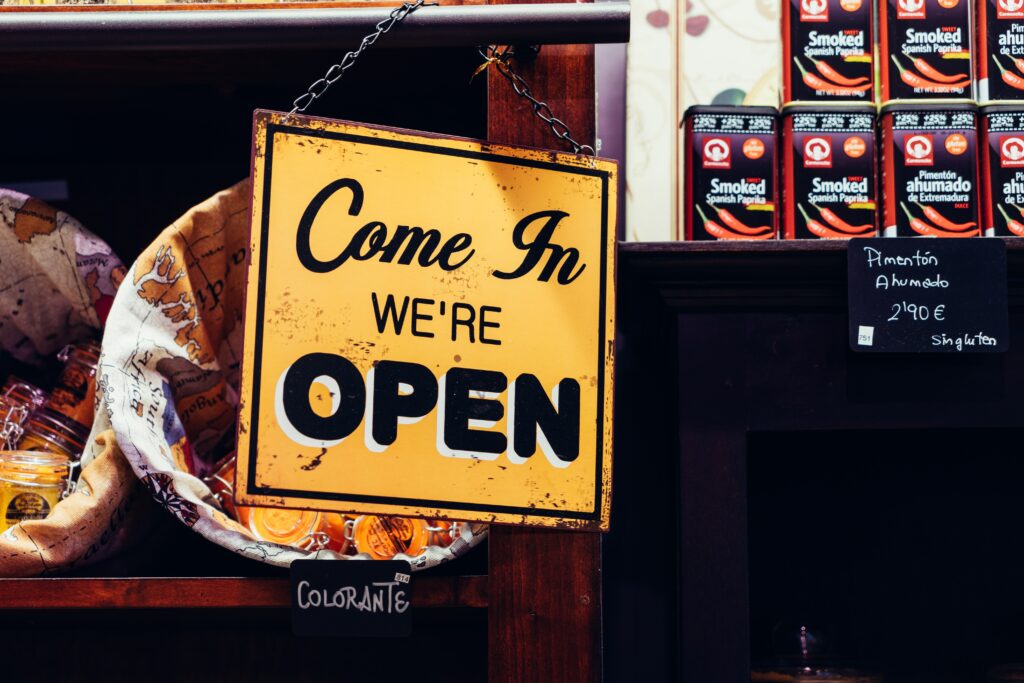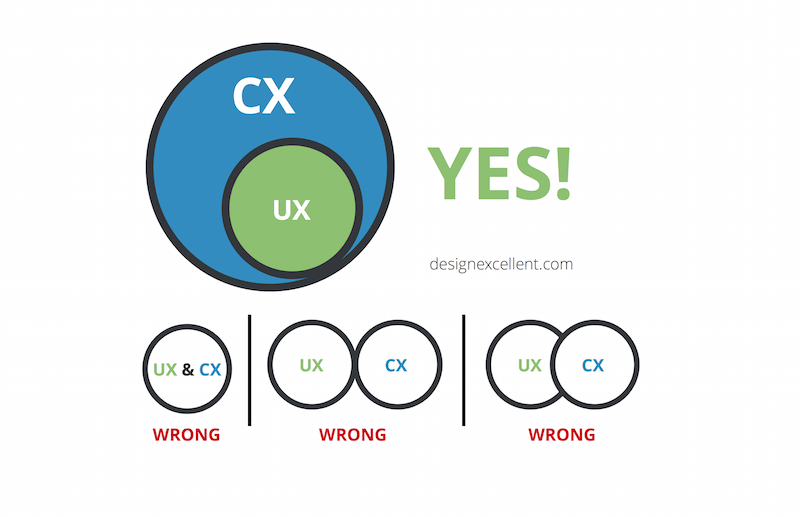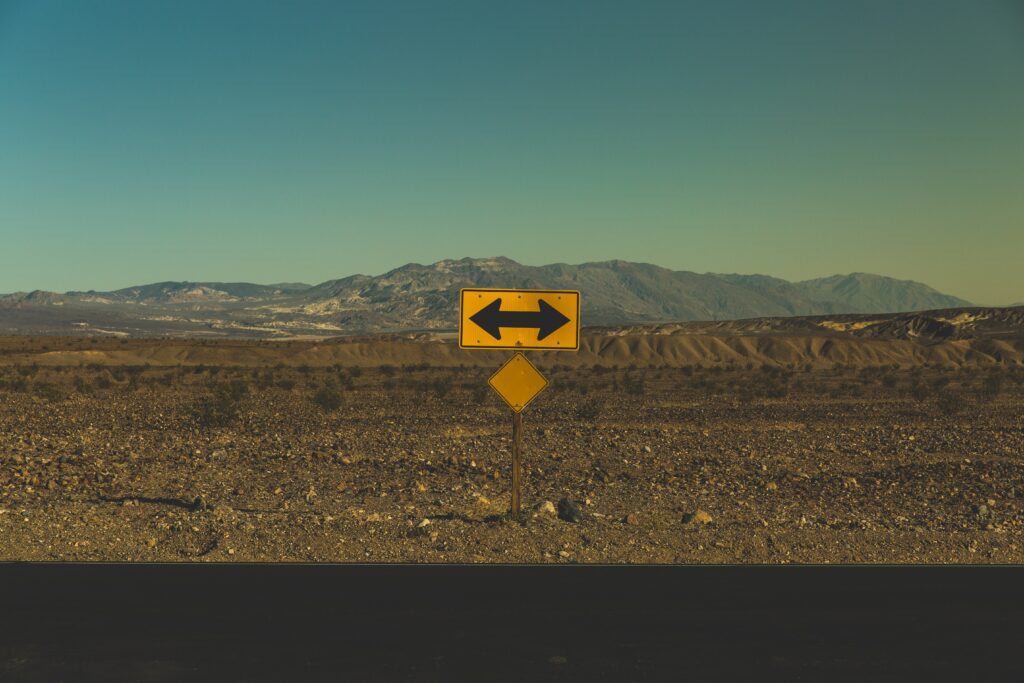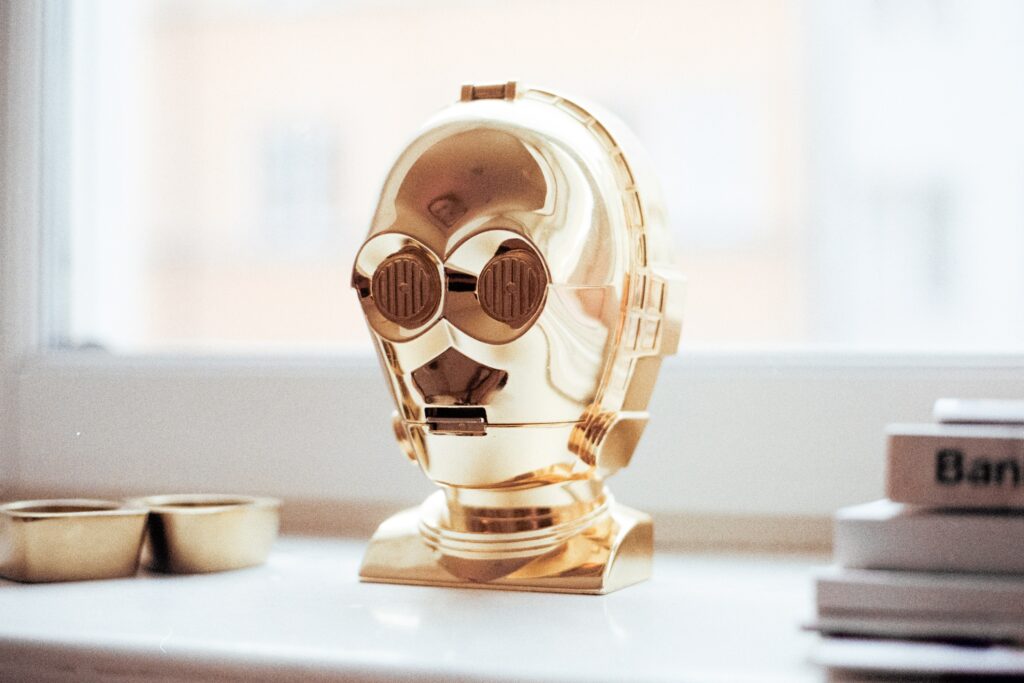What if we went beyond this tired opposition between Customer Experience (CX) and User Experience (UX)?
In recent years, UX has entered its adult years. It is no longer built in opposition but in the proposal and inclusion of other methodologies.

Design is not just what it looks like and feels like. Design is how it works. Steve Jobs.
Convinced for a long time that design is more than a simple look & feel, I share with you the translation of the feedback from Luca Longo in its use of Customer Experience in the service of User Experience.
Understanding Customer Experience will make you an excellent UX Designer
Today, I'm going to talk about a new dimension of user experience (UX).
By learning something new about UX, I have greatly contributed to my personal development. I work on many projects for different companies and often have to think beyond the boundaries of UX.
I had to extend my research to Customer Experience (Customer Experience or CX) and then define the difference between UX and CX.
A crucial step
It not only allows you to know many other aspects of your projects, but above all to make the link between users and customers, and design an optimal experience for them.

In essence, User Experience is part of Customer Experience, which contains certain aspects outside of a product. This is not the case with UX.
From experience, I know that many companies recruit multidisciplinary profiles to entrust them with the management of their UX and CX.
Different quality indicators
User Experience (UX) concerns the experience that an end user will have of the (often digital) product. It focuses on the people who interact with the product and their experience that comes from that interaction.
As I explained in a previous article, UX includes the research, design, and testing associated with creating a digital product that is easier and more enjoyable to use with a user-friendly interface.

We measure its quality according to the following criteria:
- success rate ;
- conversion rate;
- time to complete a task;
- error rate ;
- dropout rate;
- click through rate;
- ease of performing the task;
- involvement rate;
- easy to navigate web pages.
Customer Experience (CX) is a term used to describe a customer's experience across all touchpoints of a brand.
That is to say on the Internet, by telephone, in store, etc. Whether online or offline, touchpoints encompass all of a person's interactions with a brand.
The goal of a CX specialist is to uncover gaps or issues that have not been addressed by the business and that could be barriers to customer satisfaction.
We measure its quality according to the following criteria:
- overall experience;
- customer satisfaction ;
- level of effort expended by the client;
- likelihood of continued use;
- problem resolution time;
- recommendations and word of mouth.

Understanding the different channels: an example
A few months ago, I was working as a CX-UX specialist in the hospitality industry. My work focused on designing and improving the overall Customer Experience.
My first task was to identify the channels to exploit:
physical channels
- offline advertising;
- local ;
- signposts ;
- bedroom ;
- restaurant;
- interactions with staff.
digital channels
- digital experience in the hotel (free Wi-Fi, tablets, terminals, services via the app, room service, etc.);
- online experience (website, online travel agency, etc.);
- connected devices (smartphone, connected watch, etc.).

The online/offline customer journey
This step is particularly interesting. Always from my example in the hotel industry, I created a complete customer journey by analyzing each part to improve the overall experience.
Thus, I have identified six main steps:
Notoriety and discovery
When the potential customer decides to use the services of a hotel and explore the different options available to him.
The way in which the customer can contact the hotel (for example, by telephone, by e-mail or through the site).
The questions he asks lead to decision making.
How the hotel responds to the guest is the first step in the guest experience.
CUSTOMER EXPERIENCE
The decision or not to book online or offline.
Booking
When the customer chooses the method of payment and the conditions: in cash or by card, promotion, absence of hidden costs, ease of booking, etc.
Travel preparation (pre-implication)
Preparation begins when the guest receives confirmation from the hotel.
This step usually has a customer engagement strategy that I really believe in. For example, a few days before arrival, it is essential to send a welcome note by email.
Stay
This is the most important part. In this phase, the customer's journey goes from reception, to room occupancy, to hotel services and to departure.
Involvement
When the customer completes their trip. At this stage, it is important to think about social media, reputation systems, surveys and word of mouth. Many hotels now use systems to keep in touch with their customers and offer them to stay there again.

Choose the right technology
The right technology can help you support your customers with every interaction.
For example: at the time of booking, at reception, for room service, etc.
These may be the following systems:
- Customer relationship management (CRM);
- Hotel Management System (PMS);
- Online Travel Agency (OTA);
- Channel Managers and Revenue Management;
- Web and mobile solutions;
- Reputation management.
The Customer Experience starts online : consumers do their research on the Internet. They scan reviews and find the best prices. Moreover, potential customers increasingly initiate their travel research on smaller screens, via smartphones.

Bridging CX and UX
For many hoteliers, engagement begins when the guest arrives at the hotel. This is the most common error I have faced.
So I designed a system to engage customers before check-in by sending them a welcome email with useful attachments (hotel presentation, maps, guides, customer service contact details, etc.) and an SMS (or WhatsApp message) with the booking confirmation number.
The response was very positive in terms of involvement:
- customers started interacting with customer service;
- the number of overnight stays has increased;
- the cancellation rate has decreased.
And you know what ? This is all thanks to my UX knowledge!
So, armed with my expertise in UX, I designed software to serve the hotel customer, focusing on a few points:
- Customer feedback should be the key metric;
- The experience must be tailor-made;
- Do not seek to sell, but accompany customers to buy;
- Talk about customer needs, not personal preferences.

It includes many features, including:
- Alert sent to the customer as soon as his room is cleaned and ready;
- Catering services (daily menu, schedules, special requests);
- Customer service (integrated with WhatsApp, see example);
- Survey and comments;
- Loyalty program ;
- Credits and involvement at check-out (newsletter, offers, etc.);
- Assistance to customers for their trips outside the hotel (example);
- Introduction to new technologies (example).
I think you got the logic. I couldn't have designed a good system without researching Customer Experience.
The return on investment (ROI) of a well-designed CX
Today, it is the Customer Experience across all channels that sets a company apart from its competitors.

CX Leaders Returned 128% superior
to that of companies that were not CX-focused
There is also a correlation between customer satisfaction and business performance.
Watermark Consulting compared the stock returns of a group of companies that provided excellent customer experiences versus another group that was not focused on customer experience.
Between 2007 and 2011, CX leaders not only outperformed the stock index (27% more than the S&P 500 index), but outperformed companies that were not CX-focused by 128%. CX. (source)
Mobile conversions and multi-channel approach
Customers know what they want and search for it on their smartphone.
Studies show that 45% of mobile searches are goal-oriented and empower customers to make a decision.
Yet, even with such stats, many companies are cutting back on mobile development because their data indicates conversion isn't happening through mobile. This is a major mistake!
There are two reasons why mobile is vital for a company's conversion rate:
- Many customers start their product search on their smartphone, then make the purchase elsewhere (on a computer or in a store).
So on the surface, mobile doesn't drive as many conversions as other channels when in reality, it's an important part of the buying process. - Regardless of the conversion rate, it's important to provide a great mobile experience to your customers, because smartphone interactions are likely to be the customer's first encounter with your business. A good first impression will make visitors more likely to convert, either immediately or on another device (or in person) in the future.
People still don't wanna hear it, but conversion is no longer the best indicator of success.

To conclude
There is no doubt that companies that invest in improving their customer experience are more likely to increase their turnover and their retention rate. Additionally, they will experience improved customer engagement, loyalty and satisfaction.
According to Gartner, now is the perfect time to focus on improving the customer experience across all channels. Over the next few years, the battle will be fought over the quality of the customer experience.
A business is no stronger than its weakest channel.

Take away
As UX designers, we will have to design systems that interact with the Customer Experience as a whole.
Here are the main steps to follow:
- Analysis of measurements and channels;
- Review of online and offline customer journey;
- Multi-channel solution;
- Adoption of new technologies, in particular mobile;
- Consider UX as the keystone of your strategy.
Source
UX vs CX: Why understanding Customer Experience makes you a great UX Designer, Luca Longo @Design Excellent
Context: Sébastien Faure, UX Content Manager @UX Republic @sebfaureUX / Phonesavane Soulivong, UX Communication & Marketing @UX Republic @psvn_soulivong / Translation : Eric Bossin
STORYTELLING: THE ART OF CONVINCING # Paris
SMILE Paris
163 quay of Doctor Dervaux 92600 Asnières-sur-Seine
UX/UI ECO-DESIGN # Paris
SMILE Paris
163 quay of Doctor Dervaux 92600 Asnières-sur-Seine
DESIGN THINKING: CREATING INNOVATION # Belgium
UX-REPUBLIC Belgium
12 avenue de Broqueville - 1150 Woluwe-Saint-Pierre
MANAGING AND MEASURING UX # Paris
SMILE Paris
163 quay of Doctor Dervaux 92600 Asnières-sur-Seine
DESIGN SPRINT: INITIATION & FACILITATION # Paris
SMILE Paris
163 quay of Doctor Dervaux 92600 Asnières-sur-Seine
UX-DESIGN: THE FUNDAMENTALS # Belgium
UX-REPUBLIC Belgium
12 avenue de Broqueville - 1150 Woluwe-Saint-Pierre
GOOGLE ANALYTICS 4 #Paris
SMILE Paris
163 quay of Doctor Dervaux 92600 Asnières-sur-Seine
ACCESSIBLE UX/UI DESIGN # Belgium
UX-REPUBLIC Belgium
12 avenue de Broqueville - 1150 Woluwe-Saint-Pierre












